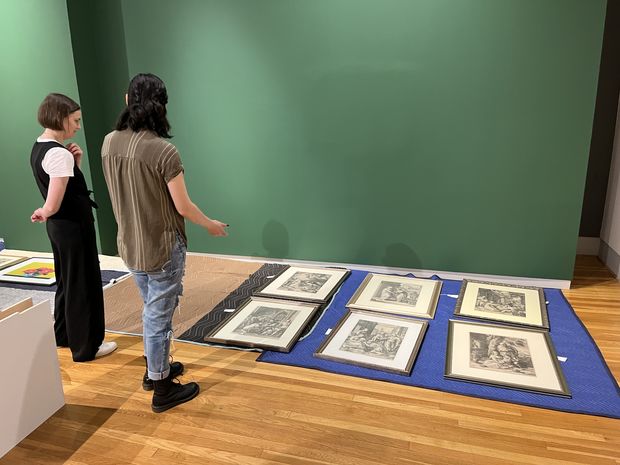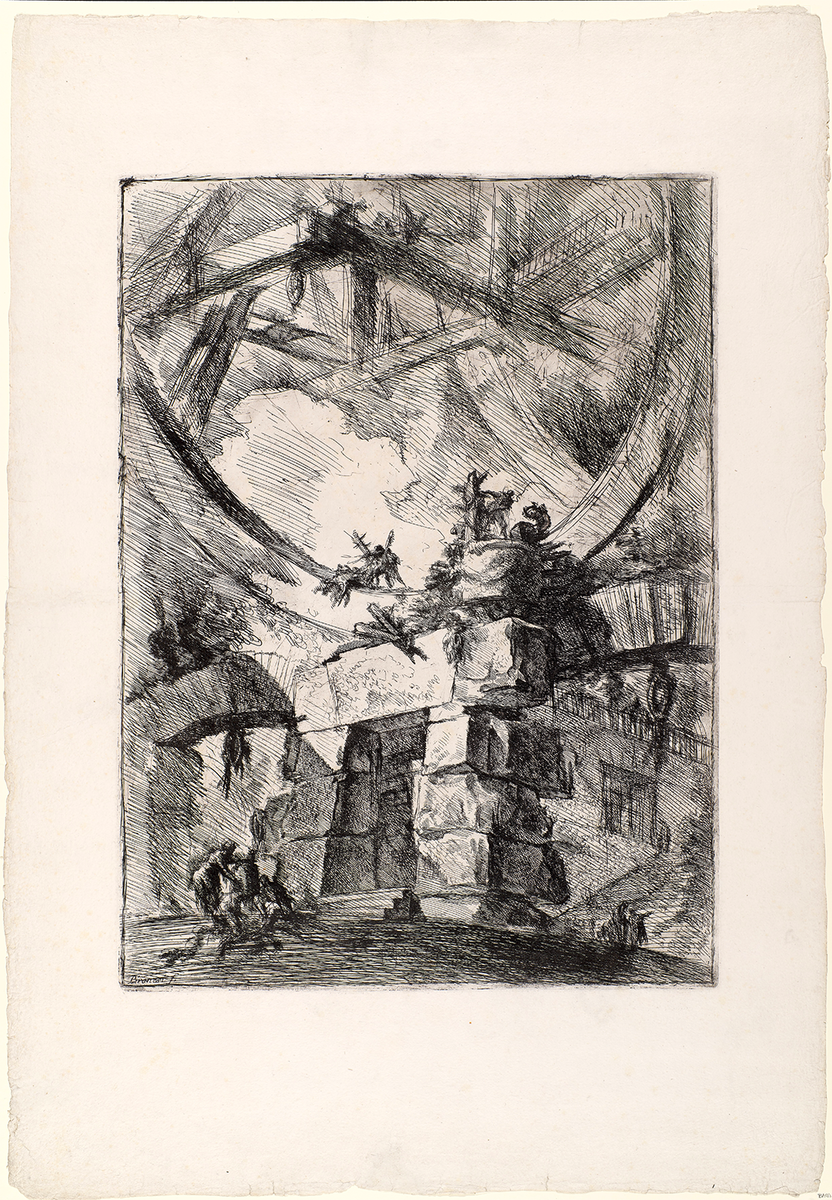Art History Grad Students Curate Print Exhibition at Berman Museum

Art history graduate students Jessica Braum (left) and Natalie Cruz arrange prints for hanging.
In early 20th century American artist Asa Cheffetz’s (1897-1965) wood engraving Deserted Farm, the carved lines are so adroitly executed that they create the illusion of wind blowing across a field of grass.
“It is remarkable that an artist can convey such a fleeting movement and sensorial experience of the wind blowing in nature by incising lines in wood in a specific manner,” said Tyler art history graduate student Jessica Braum, who along with eight other Art History graduate students and Art History Associate Professor Ashley West co-curated a print exhibition for the Philip and Muriel Berman Museum of Art at Ursinus College in Collegeville, 30 miles outside of Philadelphia.
Printmaking | Worldmaking (July 20-December 17) presents a selection of more than 100 prints dating from the 16th century to the present-day that engage in acts of worldmaking. The exhibition is divided into thematic sections that contemplate the generative power of print and its component parts.
“Worldmaking suggests the construction of stories, sites, and sights, real and invented. It permits the creation of multiple worlds by drawing on diverse perspectives, beliefs, experiences, and imaginings. Worldmaking makes room for representation and experimentation, for shuffling categories of knowledge and hierarchies, and for the conception of new and old subjects in art,” says the Berman Museum website.

West, who specializes in Northern Renaissance and Baroque art with a particular interest in prints, said her approach to the curation was “largely student driven” and that the invitation to develop an exhibition based on a recent gift of Early Modern prints to the Berman Museum was a wonderful curatorial opportunity for MA and PhD students while they were immersed in their own studies.
“Many of them are excited about working through the curatorial process from start to finish and bringing their own areas of expertise and interest,” West said, adding that the students were at every stage of advanced studies. Braum and fellow grad students Danielle Cooke, Natalie Cruz and Brittany Rubin were on hand to help hang the show. Emma Holter, Rachael Reynolds, Samantha Rhodes, Alexandra Schoolman and Jessica Sternbach also participated in the project, with everyone studying the collection, selecting prints to show, and writing wall text. West and the students worked from January through June on designing the exhibition.
“I am fascinated by the visual “language” of prints -- the unique marks that an etching, engraving, or woodcut can make,” said Rubin. “I also love the idea of the “multiple,” or a work of art that many people can look at simultaneously and interpret based on their unique circumstances.”
West said she hoped the public would be moved to engage in the very discussions that prints can generate.
“Prints factor keenly in our very human efforts to try to represent and put order to the world. They are our keepers of memories and shapers of perceptions, beliefs, and doubts. I’m hoping people will see how prints actively generate conversations and questions about culture, society, identity, and the stories we tell to make sense of the world around us,” West said. Read an interview with West.
Guided tours are available for those who request in advance through the Berman Museum of Art website. The museum is free and open to the public Tuesday through Sunday, 11 a.m. to 4 p.m.